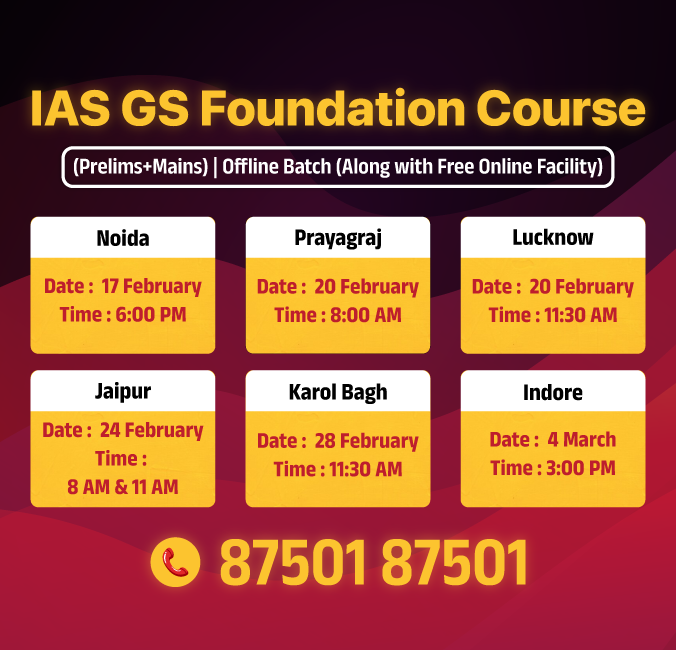Uttar Pradesh Switch to Hindi
Child Mortality Rate in Uttar Pradesh
Why in News?
According to the latest Annual Health Report (2024-25) released by the Union Ministry of Health and Family Welfare , despite improvements in the past years, Uttar Pradesh is among the states with the highest Child Mortality Rate in India.
Key Points
- About Child Mortality Rate:
- According to the report, 43 out of every 1,000 children in Uttar Pradesh die before their fifth birthday.
- The current Infant Mortality Rate (IMR) is 38 per 1,000 live births, while the Neonatal Mortality Rate (NMR) is 28.
- According to UNICEF India Report 2020, about 46% of maternal deaths and 40% of neonatal deaths occur during delivery or within the first 24 hours after birth.
- The leading causes of newborn deaths include premature birth (35%), neonatal infections (33%), birth asphyxia (20%) and congenital malformations (9%).
- The annual report,stated that Uttar Pradesh and Karnataka witnessed the highest decline in under-five mortality rate,.
- Uttar Pradesh had set a target to reduce its maternal mortality rate (MMR) to 140 per lakh live births by the year 2020 under its Vision 2030 plan.
- However, the Sample Registration System (SRS) report 2018-20, published by the Registrar General of India in November 2022, showed that the MMR was 167 per lakh live births, which is higher than the national average of 97 per lakh live births.
- The Comptroller and Auditor General of India ( CAG) report said that there was improvement in indicators such as institutional deliveries, neonatal mortality rate, infant mortality rate, and under-5 mortality rate from NFHS 4 (2015-16) to NFHS 5 (2019-21).
- According to the report, 43 out of every 1,000 children in Uttar Pradesh die before their fifth birthday.
- Causes of Child Mortality:
- Septicemia is a major cause of death in newborns, It is a serious bloodstream infection that can lead to sepsis, a life-threatening condition, and organ damage.
- The state has a high rate of home deliveries, which is a major risk. The lack of trained midwives, poor hygiene, and the absence of medical professionals in home deliveries increase the risk of infection.
- Uttar Pradesh lacks access to health care in remote and under-served areas. Lack of health care, such as lack of prenatal and postnatal care, increases infant mortality.
- Although the government has introduced several initiatives like the Janani Shishu Suraksha Karyakram (JSSK) and Home-Based Newborn Care (HBNC) to safeguard maternal and child health, the benefits of these schemes are not uniformly reaching all families.
- As a result, the infant mortality rate remains high, particularly in remote and underserved regions.
- Malnutrition and climate change affect the health of children. This leads to an increase in infant mortality rate.
- Many families lack awareness about infections during delivery and baby care.


Uttar Pradesh Switch to Hindi
Anant Nagar Housing Scheme
Why in News?
Uttar Pradesh Chief Minister launched Anant Nagar Housing Scheme of Lucknow Development Authority.
Key Points
- About the Scheme:
- The cost of this scheme is Rs 6500 crore which is proposed in 785 acres.
- Under this, one and a half lakh people will get residential facilities.
- 10 thousand flats will be constructed on 60 plots.
- Provision of housing for more than 25 thousand people has been made in 5 thousand buildings of EWS (Economically Weaker Section) and LIG (Low Income Group) category.
- 3 thousand houses will also be constructed here under the Pradhan Mantri Awas Yojana.
- Apart from this, an education city will be developed in an area of 102 acres.
Pradhan Mantri Awas Yojana – Urban (PMAY-U)
- Launch:
- PMAY-U was launched on June 25, 2015 with the main objective of providing housing to the people of urban areas by the year 2022.
- Implementation:
- Ministry of Housing and Urban Affairs.
- Features:
- It addresses the urban housing shortage among the urban poor (including slum dwellers) by ensuring proper housing for the eligible urban poor.
- Under PMAY(U), basic amenities like toilets, water supply, electricity and kitchen are provided in all houses.
- This scheme promotes women empowerment by providing ownership of houses in the name of the female member or in joint name.
- Priority is given to persons with disabilities, senior citizens, Scheduled Castes, Scheduled Tribes, Other Backward Classes, Minorities , Single Women, Transgender and weaker sections of the society.










%20MPPCS%202025%20Desktop%20E.jpg)
%20MPPCS%202025%20Mobile%20E%20(1).jpg)





















 PCS Parikshan
PCS Parikshan

